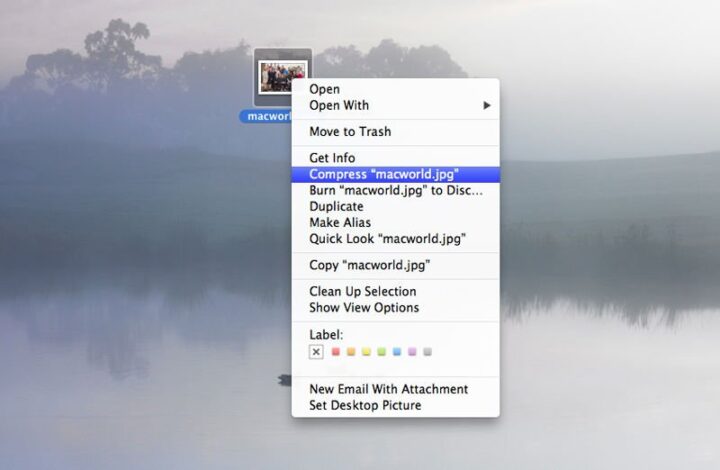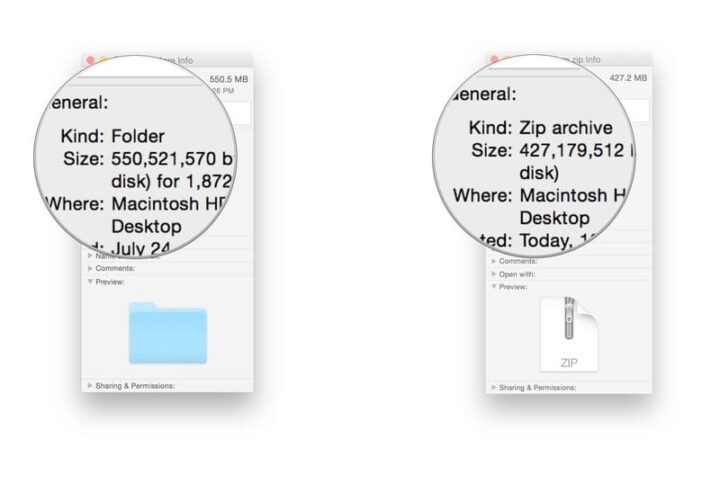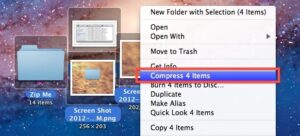In Compressing a file on your Apple Mac Packed documents occupy less room on your Mac’s hard disk than single uncompressed records, making pressure is a helpful strategy to learn: Every byte can tally on the off chance that you’re lacking in space or when you’re sending a record to another person over the Internet. Fortunately, the Mac has underlying record pressure to make it simple to keep your hard drive liberated. The Mac’s built-in compression and decompression option uses the ZIP design, which additionally turns out to be perhaps the most regularly utilized document record designs on the Internet. It’s a lossless information pressure conspire, which implies that your record will remain the very same in the wake of being compacted then decompressed—you will not lose any information.
A few notes before we begin: The real measure of record pressure on a ZIP document will change contingent upon its substance.
A few kinds of information are more compressible than others in Compress a file on your Mac.
Likewise, record pressure can require significant investment. Macintoshes with quicker processors and more RAM can pack and decompress documents a lot quicker than more slow Macs. Document pressure additionally changes the record type to a .ZIP file, which will make it more hard to view and check its substance.
We wouldn’t prescribe utilizing this procedure to regularly chronicle everything on your hard circle. In any case, on the off chance that you have a major file of, say, pictures you will not need admittance to, it very well may be a helpful apparatus to hold your hard drive back from topping off excessively quick.You should see whether ZIP archiving will save you sufficient opportunity and enough space to make it worth your time and energy: You may find that you can save many gigabytes along these lines, or you may eventually choose it’s more worth your time and energy to just purchase a huge outer hard drive all things considered in Compress a file on your Mac.
There are additionally third-party utilities that can help you pack and decompress records, as well, and they’ll work with numerous non-ZIP designs. Perhaps the most verifiably mainstream business Mac pressure applications is called StuffIt — it upholds highlights like encryption and secret word insurance, uphold for Apple’s Automator programming and then some. Smith Micro, StuffIt’s StuffIt’s owner, likewise makes StuffIt Expander for Mac clients who simply need to open archives.

What we will see here?
Compress a file on your Mac
- Select the file or folder in the Finder.
- Right-click or control-click on the file to bring up the pop-up menu.
- Select Compress filename.

- The Mac will begin to compress the file or folder you’ve selected. Once it’s done, you’ll find a filename that ends in .zip right next to the file you selected.
- Your original file or folder is untouched; the .ZIP file contains the compressed archive.

In Compress a file on your Mac At the point when you’re prepared to decompress a ZIP record, simply double tap on it. The Mac will wrap up. Similarly as with packing, the first document (for this situation, the ZIP file) will stay unblemished, and the Mac will remove the records directly close to it.
Pack a document or organizer: Control-click it or tap it utilizing two fingers, at that point pick Compress from the alternate route menu. On the off chance that you pack a solitary thing, the compacted record has the name of the first thing with the . zip expansion. On the off chance that you pack different things without a moment’s delay, the compacted document is called Archive.
Condense a Large File on a Mac
Fruitful organizations depend on correspondence, and present day correspondence frequently depends on the exchange of advanced information.. At the point when a document is excessively enormous, be that as it may, it frequently gets hard to send by means of email or offer on the web. Mac’s OS X working framework for Mac PCs incorporates an unnoticeable application called the Archive Utility, which gathers – or packs, in tech terms – records into the ZIP design, a conservative, effectively share-capable arrangement with a more modest document size.
- Select one or more items on your Mac that you’d like to compress. To select more than one item, hold the “Command†key and click on each item you’d like to select. You’ll know you’ve selected a file when it is highlighted.
- Hold “Control†on your keyboard, and click the selected item or items to launch the shortcut menu.
- Choose “Compress [name of file]†from the shortcut menu. This creates a condensed ZIP version of the file in question. If you compress more than one item, the Archive Utility creates a compressed fie called “Archive.zip.â€
How do you compress a file that is too large?
In Compress a file on your Mac You can make a huge record somewhat more modest by compacting it into a zipped organizer. In Windows, right-click the record or organizer, go down to “ship off,” and pick “Compacted (zipped) envelope.” This will make another organizer that is more modest than the first.
Advantages of Compressing Folders on Mac
Each byte checks in case you’re lacking in plate space or when you’re sending an enormous record over the Internet. This is the place where document pressure comes in. Document pressure has a few benefits that clients can profoundly profit by.
Storage Space
Lossless pressure, utilized in compress document innovation, can diminish a record to 50 percent from its unique size. A few records, for example, reports can be zipped and diminished to 90% from its unique size. In this manner document pressure saves you a ton of room in your plate and you can utilize it for more significant stockpiling choices.
Transfer Speed
In the event that you end up seeing that all your downloads are in kept inside compressed records, this is on the grounds that it requires some investment to move these information when they are packed as opposed to separately.
These packed records utilize lesser data transmissions (the speed utilized for network moves).
Cost
Utilizing chronicles or programming for document pressure can set aside you loads of cash since it diminishes the expense of buying another hard drive for more stockpiling. On the off chance that all documents inside your work area are coordinated and compacted, you will have more space to use for different projects needed by the framework.
Conclusion
Somebody once said you can never be excessively rich, or excessively slender; you may likewise add that you can never have a lot of extra room. One approach to save space on your Mac is to pack (or ‘compress’) records and envelopes so they occupy less space, and this is likewise a smart thought in the event that you intend to send them to another person.
In this article we covered the best way to compress a record on your Mac, how to unload (or ‘unfasten’) it.
Read more!
- Best Selling iPhone XS Wallet Cases For Professionals
- How to scan a document in Notes app on iPhone and iPad? Everything you need to know about scanning in Notes!!
- Best iPhone X Wallet Cases For Total Convenience
- iPad 3rd Gen Wallet Cases-Perfect to carry your cards, money, etc!
- Call Recording Apps for iPhone in 2021
















